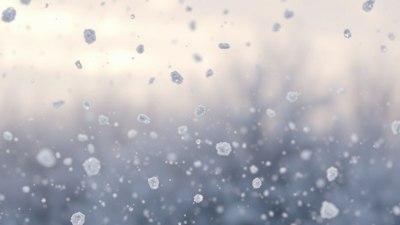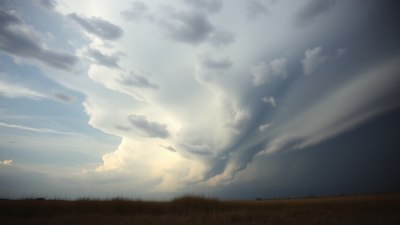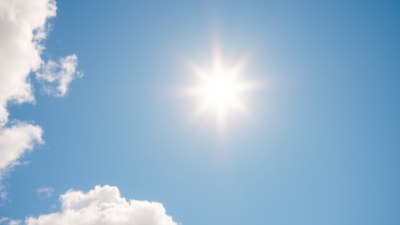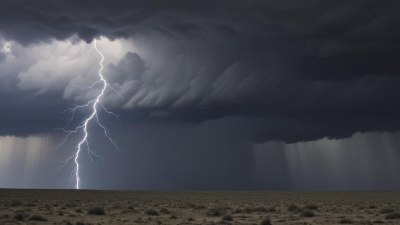How Snow Can Fall in Above-Freezing Temperatures
Explore the atmospheric conditions and science behind snow falling even when surface temperatures are above freezing.

Snow typically forms in the atmosphere when the air temperature is below freezing, causing water vapor to crystallize into ice particles. However, it is not uncommon to witness snow falling even when surface temperatures are above the freezing point of 0°C (32°F). This intriguing meteorological phenomenon occurs due to various atmospheric conditions and processes that allow snowflakes to survive the journey to the ground without melting completely.
To understand how snow can fall in above-freezing temperatures, it is essential to examine the vertical temperature profile of the atmosphere, the microphysical processes involved in snowflake formation and melting, as well as the dynamics of precipitation and environmental factors influencing snowfall.
The Formation of Snowflakes
Snowflakes originate high in the clouds where temperatures are well below freezing. Within these clouds, water vapor undergoes deposition, directly turning into ice crystals. These ice crystals grow by attracting more water vapor, forming complex and unique snowflakes. The cloud temperature where snow is created is almost always below freezing, typically ranging between -10°C and -20°C.
Once formed, snowflakes begin to fall toward the Earth. As they descend, their survival depends heavily on the temperature layers they encounter. If the temperature remains below freezing from cloud base to the surface, snow will reach the ground intact. However, in cases where there is a layer of warmer air closer to the ground, snowflakes risk melting before arriving at the surface.
Vertical Temperature Profiles and Melting Layers
Atmospheric temperature is not uniform vertically. There are often pockets of warm air between colder layers. This layered temperature structure is critical in deciding whether precipitation will fall as rain, sleet, freezing rain, or snow.
When surface temperatures are above freezing, but there is a deep enough layer of cold air above, snow can remain solid through much of its descent. As the flakes reach warmer air nearer to the surface, they may begin to melt and lose their crystalline structure. However, if the warm layer is relatively shallow, or if the snowflakes fall quickly, they may only partially melt. This incomplete melting results in wet snowflakes or snow reaching the ground before fully turning into rain.
Another factor influencing melting is the air’s moisture content and temperature near the surface. If the near-ground air is close to but just above freezing, it might not have enough energy to melt the snowflakes fully, especially if these flakes are large or dense.
Downdrafts and Evaporative Cooling
Strong downdrafts, or downward-moving air currents, can also cool the air near the surface temporarily. As dry air descends rapidly, it compresses and warms adiabatically. However, if precipitation falls through a dry layer, it can cause evaporative cooling, lowering the temperature of the air adjacent to the falling snow.
This cooling effect can drop the air temperature near the surface to just below freezing or close enough to prevent snow from melting. Consequently, even if official temperature readings slightly exceed 0°C, the actual air temperature where the snow flakes land could be substantially cooler.
Wet-Bulb Temperature: A Critical Indicator
The wet-bulb temperature is an important parameter when it comes to understanding snow at above-freezing air temperatures. It refers to the lowest temperature air can reach by evaporation and is always less than or equal to the actual air temperature (dry-bulb temperature).
Snow can fall and accumulate if the wet-bulb temperature is below freezing, even if the measured dry-bulb temperature is above freezing. This is because the evaporative cooling within the melting layer can allow snowflakes to survive their descent and remain frozen upon reaching the surface.
Meteorologists often use the wet-bulb temperature to forecast whether precipitation will fall as rain, snow, or mixed forms like sleet or freezing rain, particularly when surface temperatures hover near the freezing point.
Surface Conditions and Snow Persistence
Even if snow reaches the surface while the air temperature is above freezing, the ability of snow to accumulate depends on the ground temperature and surface composition. For instance:
- If the ground is cold, snowflakes can maintain their structure longer and accumulate despite above-freezing air temperatures.
- On warm surfaces like asphalt or concrete heated by sunlight, snowflakes may melt quickly upon contact, limiting accumulation.
- Snow falling at night, when infrared cooling lowers surface temperatures, is more likely to accumulate even if the air temperature is slightly above freezing.
Examples of Snow Falling Above Freezing Temperatures
Numerous real-world weather events support these principles. In the Southern United States, snow often falls when official temperatures at airports or weather stations read above freezing. This is especially common during early winter storms where dynamic atmospheric conditions produce snow aloft but warmer air near the surface.
In mountainous regions, temperature inversions can trap warmer air under colder air masses aloft, allowing snow to fall through the cold layer but land on slightly warmer air near the surface. This can create pockets of snow accumulation in areas where temperatures may be above freezing according to ground measurements.
Cities in the northeastern United States frequently experience snowfall with temperatures in the mid-30s Fahrenheit (1-2°C), especially during significant storm systems that bring large amounts of moisture and layered temperature profiles.
Impact of Snowflakes’ Size and Shape
Snowflakes are highly variable in size and shape, influencing their melting rate. Larger flakes have a greater volume-to-surface area ratio and require more heat energy to melt. Therefore, they can survive longer through warm air layers. Conversely, small or delicate flakes with more surface area exposed to warm air melt faster.
Heavier snowflakes fall faster, reducing time exposed to warm air, which also helps preserve their frozen state upon reaching the ground.
Humidity and Sublimation Effects
Humidity influences the melting or sublimation of snowflakes. In low-humidity conditions, snow near the surface can sublimate — transition directly from solid to vapor — especially if temperatures are slightly above freezing but the air is dry. This can reduce snow accumulation despite precipitation.
In contrast, high humidity levels near the ground help maintain snowflakes’ integrity by limiting sublimation and enhancing the likelihood that snow will reach the surface and accumulate even at temperatures marginally above freezing.
The Role of Microphysical Processes in Snow Survival
Microphysical interactions within clouds play a crucial role in determining snowflake size, composition, and their subsequent interaction with atmospheric warming layers. Ice crystals can aggregate into complex shapes to form snowflakes that are more resilient to melting during descent.
Additionally, processes like riming, where supercooled water droplets freeze onto snowflakes, can increase the mass and hardness of snowflakes, allowing them to withstand passage through warmer layers with less melting.
Temperature Fluctuations and Rapid Changes
Rapid shifts in temperature near the surface can also contribute to snow falling above freezing. For example, temperatures may warm during the day to slightly above freezing yet remain marginally below at night, allowing snow to fall in the early evening before the air fully warms.
Moreover, the temperature sensors may not always reflect microclimates accurately within an urban environment or varied terrain, meaning measured temperatures could be slightly higher than the actual conditions affecting snowfall.
Summary of Key Factors Allowing Snowfall Above Freezing
- Cold air layers aloft: Snow forms and begins its descent from freezing temperatures in the upper atmosphere.
- Shallow warm layers near the surface: If the warm layer is not deep, snowflakes may not melt fully.
- Wet-bulb temperature below freezing: Ensures evaporative cooling preserves snowflakes.
- Downdrafts and evaporative cooling: Can lower near-surface temperatures temporarily.
- Snowflake size and density: Larger and denser flakes resist melting longer.
- Humidity and surface temperature: Influence melting rates and accumulation.
Understanding these conditions helps meteorologists provide accurate forecasts in borderline situations where precipitation can alternate between snow and rain. It also explains why localized snowfall events may surprise people during mild winter days with above-freezing temperatures.
The journey of a snowflake from the clouds to the ground is a delicate balance of atmospheric thermodynamics, microphysics, and environmental factors. Snow is not solely dictated by the air temperature at the surface but by a complex vertical profile of temperatures and moisture extending several kilometers above the Earth.











